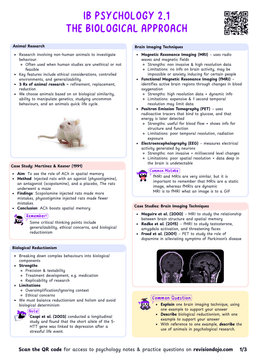Magnetic Resonance Imaging (MRI)
Magnetic Resonance Imaging (MRI)
MRI uses a powerful magnetic field and radio waves and magnetic fields to detect energy emitted by hydrogen atoms in the brain, which vary depending on the type of tissue. This creates a detailed, static three-dimensional image of brain structure.
Procedure
- Participants lie on a table that slides into a cylindrical scanner. The machine generates images based on the varying hydrogen concentrations across different brain regions.
Strengths
- Non-invasive and safe, with no radiation exposure.
- Provides high spatial resolution, allowing for detailed imaging of brain structure.
Limitations
- Does not provide information on brain activity.
- The procedure can cause anxiety in claustrophobic participants.
- Expensive and unsuitable for individuals with metal implants.
Maguire et al. (2000) investigated the brain structure of London taxi drivers and found increased grey matter in the hippocampus, which is associated with their advanced navigational skills. This study used MRI to identify structural differences in the brain.

Functional Magnetic Resonance Imaging (fMRI)
Functional Magnetic Resonance Imaging (fMRI)
fMRI detects changes in blood oxygenation levels (BOLD signal) to identify active brain regions during specific tasks. Active areas receive more oxygenated blood, thus it is responsive to the brain's metabolism. The result is a time map, showing when certain parts of the brain were activated.
Procedure
- Participants perform cognitive tasks (e.g., viewing images or solving problems) while lying in the scanner. The machine captures changes in brain activity related to the task.
Strengths
- Combines structural and functional imaging, showing active brain regions.
- Excellent spatial resolution compared to other functional techniques.
Limitations
- Temporal resolution of about 1 second limits the detection of fast processes.
- Noise from random thoughts or movements can affect data accuracy.
- Expensive and time-intensive.
Passamonti et al. (2012) explored the impact of serotonin on the amygdala and prefrontal cortex (PFC) during the perception of social threats. The researchers utilized fMRI to examine brain activity under different serotonin conditions.
Radke et al. (2015) examined the role of testosterone in amygdala activation when participants approached threatening faces. fMRI was employed to measure how testosterone influenced brain activity during this task.


